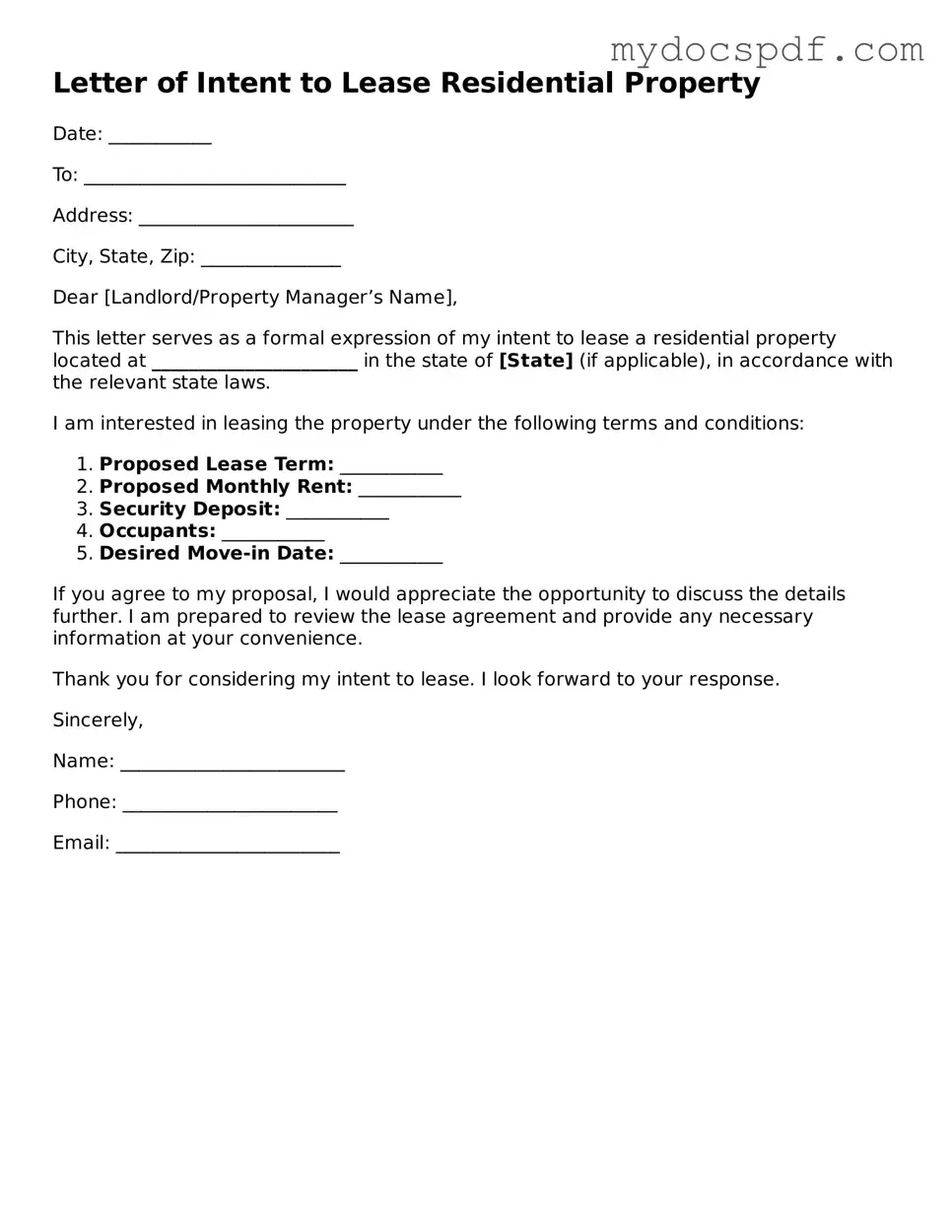Letter of Intent to Lease Residential Property
Date: ___________
To: ____________________________
Address: _______________________
City, State, Zip: _______________
Dear [Landlord/Property Manager’s Name],
This letter serves as a formal expression of my intent to lease a residential property located at ______________________ in the state of [State] (if applicable), in accordance with the relevant state laws.
I am interested in leasing the property under the following terms and conditions:
- Proposed Lease Term: ___________
- Proposed Monthly Rent: ___________
- Security Deposit: ___________
- Occupants: ___________
- Desired Move-in Date: ___________
If you agree to my proposal, I would appreciate the opportunity to discuss the details further. I am prepared to review the lease agreement and provide any necessary information at your convenience.
Thank you for considering my intent to lease. I look forward to your response.
Sincerely,
Name: ________________________
Phone: _______________________
Email: ________________________
